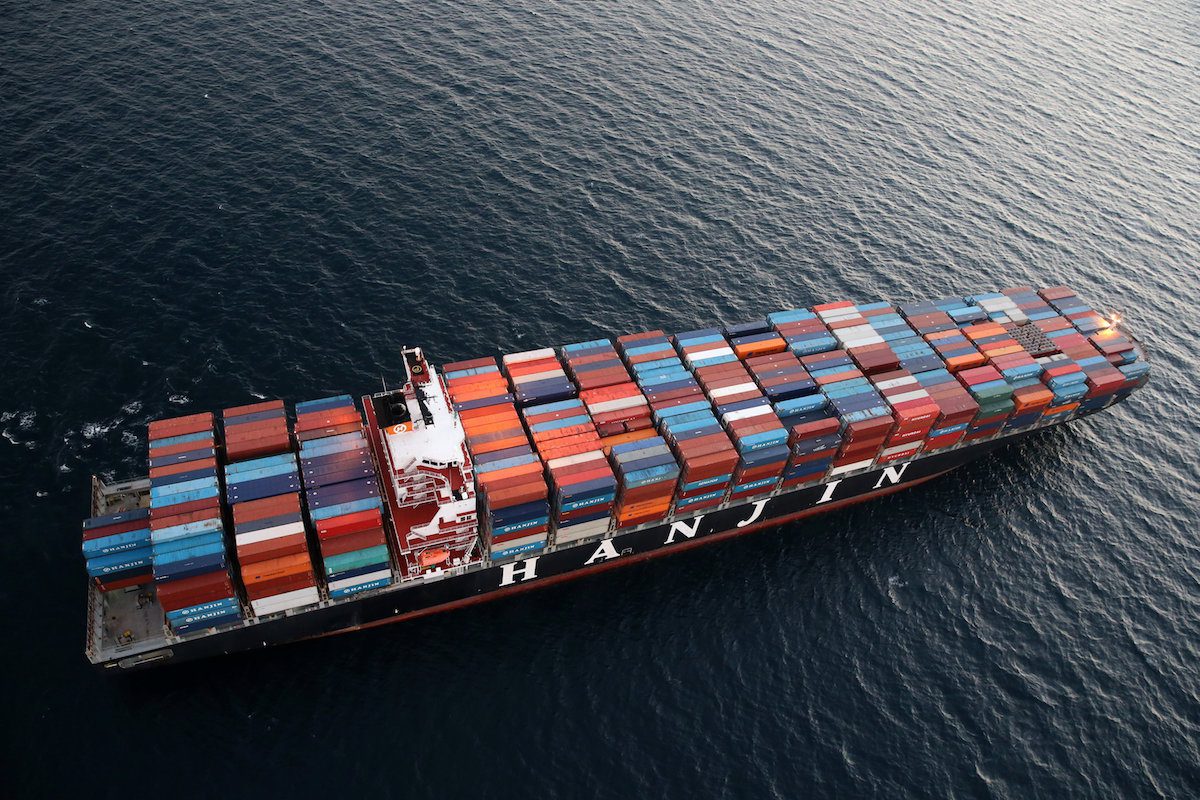UK Strikes at Heart of Russia’s Arctic Energy Empire
New maritime services ban threatens to sever lifeline for Yamal LNG exports By Paul Morgan (gCaptain) – In the frozen waters above the Arctic Circle, a fleet of specialised ships...

A Hanjin Shipping Co ship is seen stranded outside the Port of Long Beach, California, September 8, 2016. REUTERS/Lucy Nicholson
By Chris Bryant
(Bloomberg Gadfly) — So, Maersk might step in and buy some Hanjin assets after the South Korean shipping company’s bankruptcy filing, according to a Bloomberg News report (citing analysts).
While it’s understandable that the Danish giant’s new boss Soren Skou feels pressure to deliver growth and head off competition, he must remain disciplined and avoid throwing good money after bad. In principle, Hanjin’s bankruptcy is positive for the rest of the container shipping industry, which is beset by oversupply and chronically low freight rates.
But it won’t be enough to put shipping back on an even keel: Hanjin accounts for less than 3 percent of global capacity and everybody else has plenty of new ships on order. When announcing a split of its transportation and energy activities last week, Maersk promised to refrain from ordering more new vessels, which is a big relief. But Skou says he will pursue acquisitions to try to expand market share as shipping consolidates.
With an $11.5 billion liquidity reserve, Maersk is better placed to pursue opportunistic purchases than some over-leveraged rivals. Maersk’s cash probably isn’t earning much of a return right now, so the bar for returns on investment is presumably pretty low. Boosting its position in Trans-Pacific trade may make sense too, as it’s underrepresented there and scale’s important in shipping.
Yet despite all this, it’s hard to see how buying more shipping assets will solve Maersk’s growth and profitability problems. Customers are a fickle bunch and after Hanjin’s demise, most will already have made other arrangements to transport their goods (indeed, Maersk says it’s a beneficiary).
And history offers a sobering lesson here. After Maersk’s last big shipping acquisition — the $2.6 billion purchase of P&O Nedloyd in 2005 — about half the acquired market share later vanished, according to Drewry Martime Advisors’ estimate.
While shipping asset prices are low right now, betting on a rapid recovery isn’t advisable. Container shipping’s problems look deeply ingrained: global trade growth has slowed and goods are increasingly being made where they’re consumed. Consolidation won’t necessarily result in much higher freight rates.
Credit Suisse estimates that Maersk Line will have among the lowest returns on invested capital of all Maersk’s businesses in 2016. If Maersk didn’t already own a big shipping line, it’s hard to imagine it would decide this was a great industry in which to allocate more capital.
It might have sounded dull, but by far the most compelling part of Skou’s presentation last week was the bit about increasing collaboration and asset uiltization across Maersk’s transport businesses, which include container shipping, ports and freight-forwarding. This should help deliver about $600 million in synergies over three years, adding 2 percentage points to the return on invested capital. Though not as sexy as buying a rival fleet, it’s a less capital-intensive, low-risk path to higher returns. It should be Skou’s priority.
This column does not necessarily reflect the opinion of Bloomberg LP and its owners.
© 2016 Bloomberg L.P

Sign up for gCaptain’s newsletter and never miss an update

Subscribe to gCaptain Daily and stay informed with the latest global maritime and offshore news
Essential news coupled with the finest maritime content sourced from across the globe.
Sign Up